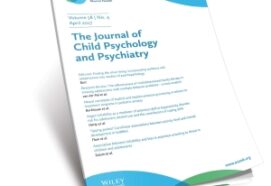Annual Research Review: Positive adjustment to adversity – trajectories of minimal–impact resilience and emergent resilience
Journal of Child Psychology and Psychiatry 54:4 (2013), pp 378–401. doi:10.1111/jcpp.12021.
- Get the full text online or PDF
George A. Bonanno and Erica D. Diminich, Columbia, Teachers College, New York, NY, USA
Abstract
Background
Research on resilience in the aftermath of potentially traumatic life events (PTE) is still evolving. For decades, researchers have documented resilience in children exposed to corrosive early environments, such as poverty or chronic maltreatment. Relatively more recently, the study of resilience has migrated to the investigation of isolated PTE in adults.
Methods
In this article, we first consider some of the key differences in the conceptualization of resilience following chronic adversity versus resilience following single-incident traumas, and then describe some of the misunderstandings that have developed about these constructs. To organize our discussion, we introduce the terms emergent resilience and minimal-impact resilience to represent trajectories of positive adjustment in these two domains, respectively.
Results
We focused in particular on minimal-impact resilience, and reviewed recent advances in statistical modeling of latent trajectories that have informed the most recent research on minimal-impact resilience in both children and adults and the variables that predict it, including demographic variables, exposure, past and current stressors, resources, personality, positive emotion, coping and appraisal, and flexibility in coping and emotion regulation.
Conclusions
The research on minimal-impact resilience is nascent. Further research is warranted with implications for a multiple levels of analysis approach to elucidate the processes that may mitigate or modify the impact of a PTE at different developmental stages.


